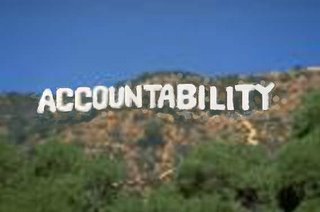Grim reaping....
| Page three of the print copy of the New York Times has become the "Northern Ireland News" page since the release of the IRA statement earlier this week. On Saturday, two images of the IRA pledge to end its use of violence were displayed on that page. Above the fold was an article reporting the response to the announcement in Northern Ireland itself -- where it has obviously generated predictably unenthusaistic responses ranging from "so what" (nothing has really changed, has it?) to the skepiticism of those who belive this is just another hyped-up annoucement that will eventually backfire. Immediately below is a report of how the statement was greeted with elation in New York among policy elites in the Irish-American community as a watershed event in the history of the Troubles -- with comments noted from Clinton, Kissinger and the usual suspects. As much as I would like to assume the latter position, I think the street-level realism of Nothern Irelanders is correct: nothing much will change in the day-to-day routines of my friends in Belfast. As if to reinforce that, today's (Sunday's) Times piece on page three features the "loyalist" factions, and as far as I can tell the description and analysis in that article is pretty much on target. While living in Northern Ireland, I rarely felt any anxiety except when entering the loyalist areas -- whether walking in the Shankill Road area of Belfast (which I did not do often, although it is difficult to avoid in that small city) or driving into some towns to the north such as Larne where some pretty ominous graffiti, banners and other "markings" were all too evident. Where the IRA had discipline and focused (if sometimes obstinate) leadership, the loyalists are divided and more prone to ruthless gangland violence. (It is not that the IRA do not engage in criminality -- it is just that they do it in an organized and dsciplined way...:-\). The infighting among the loyalists was so common during my stay that it was usually reported as "police blotter" stuff rather than on the front page (there were exceptions, of course). The loyalist community seems made up of a number of groups that seem preoccupied with turf, and there was a familiar ring to the stories you'd hear about the conflicts among them -- very much "Sopranos" like tales in more ways than one. The loyalists remain the unknown factor in all this movement toward "peace" in Northern Ireland. As noted in the article, while the IRA transforms into an openly political actor (in fact, they were more than halfway there already), the loyalists are unlikely to and could interfere with whatever momentum there now exists toward settlement. What is more likely, however, is that they will continue on the current path of gangland behavior and criminal activity -- and in that sense become irrelevant to the political life of Northern Ireland while further degenerating into a law enforcement problem that both sides of the political divide will need to contend with. And it must be said that to a great extent the blame for this "loyalist problem" must be spread widely -- to the IRA for engaging in the violence that spurred the emergence of the loyalist paramilitaries, to the British who helped nurture them as a counterforce (see friend Justin's book on Killing Finucane), and to the unionists who have used them as leverage in the political battles of the past. Some how the expression "you will now reap what you have sown" comes to mind.... Northern IrelandIRA |



Comments on "Grim reaping...."
post a comment